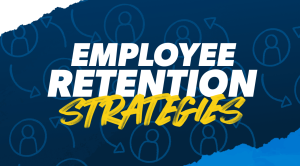Key takeaways
- Home improvement loans are used specifically for financing repairs, renovations or remodels.
- Lenders offer unsecured loans based on your credit or secured loans based on your property’s equity.
- Comparing lenders is the most reliable way to find the lowest rates for the type of renovation loan you choose.
A home improvement loan can be a good option for financing necessary repairs, renovations and even remodels. Also called renovation loans, there are six primary options to choose from. Once you know the scope of your project, research lenders and determine if a home improvement loan is a good idea.
6 home improvement loan types
While each loan option will give you a way to pay for your home improvement project, some may work better than others. The cost of your project, how much equity you have in your home, whether you already own the property and your credit are some of the factors that will influence which is best for your situation.
Home equity loans
Bankrate’s take: Good for borrowers with a good amount of home equity.
Home equity loans are ideal for those who have more worth in their homes than what is owed on the mortgage.
Funded by the equity in your home and received in a lump sum, a home equity loan usually has a fixed interest rate and is repaid between five and 30 years. Lenders generally allow you to borrow up to 85 percent of your home’s equity.
You can apply for a home equity loan through banks, credit unions or online lenders. Interest rates and overall terms offered depend on your creditworthiness.
Because the loan is secured by your home, you typically get lower interest rates when using a home equity loan for a renovation. You can also potentially write off the interest at tax time — if the funds are all used for home improvement.
A major drawback is that defaulting on the loan could come with some serious consequences, including foreclosure.
Home equity lines of credit (HELOC)
Bankrate’s take: Good for borrowers with home equity and an ongoing project.
A HELOC is another way to finance home renovations using your home’s equity. Unlike a home equity loan, a HELOC works more like a credit card. It allows you to withdraw funds as the need arises for a set period with fixed or variable interest rates.
HELOCs boast some of the lowest interest rates available, making them a great option to keep your monthly payment low while your improvements are being made.
They are an excellent way to fund ongoing home projects since you don’t have to use all the credit at once. You can continue to draw from the line of credit as you need until the draw period closes, which is typically after 10 years.
When comparing HELOC options, watch out for ongoing fees and penalties for closing out your credit line early. Like home equity loans, HELOCs use your home as collateral, so you put your home at risk if you can’t repay the loan. Fortunately, you also get the same tax-deduction perk if you use your HELOC solely to pay for home improvement expenses.
Personal loans
Bankrate’s take: Good for borrowers with a small or midsize project.
You can finance a small or midsize home project with an unsecured personal loan. They can be a good option for quick emergency home repairs as well since personal loans tend to offer fast funding, sometimes as soon as the day you’re approved.
A personal loan is similar to a home equity loan because you receive all the funds at once and make payments at a fixed rate. However, personal loans are typically unsecured, which means you don’t risk your home if you default. They can be a good alternative to home equity loans or HELOCs if you don’t have enough equity to cover the cost of your renovation plans.
Personal loans are offered by a variety of lenders. Terms usually range from one to seven years, and rates will generally be between 7 and 36 percent, with bad credit personal loan rates typically on the higher end of the range.
Compared to home equity products, unsecured home improvement loan rates are usually higher. The one exception is that rates for excellent credit borrowers may be comparable to home equity loans.
Because a personal loan for home improvement is funded as a lump sum, you have less flexibility than with a credit card, HELOC or personal line of credit. This means you may need to borrow more if your project costs exceed your budget.
Cash-out refinancing
Bankrate’s take: Good for a low payment on a big renovation.
If you have a major home upgrade in your future, cash-out refinance can spread the payment out as long as 30 years to keep your monthly payment lower than most other options.
To qualify for cash-out refinancing, you apply for a new mortgage on your home for more than you owe and pocket the extra money, which you can use for home improvements. You get the cash as long as you have “extra” equity in your home.
Similar to home equity loans, you receive all the funds at once and typically choose a fixed rate with a repayment term as long as 30 years. However, you usually can’t borrow more than 80 percent of the value of your home.
That said, a cash-out refinance may not make sense as a renovation loan if you have an interest rate that’s lower than current mortgage rates. You may also pay higher closing costs since your loan amount is typically much higher than what you’d borrow with a home equity loan or personal loan.
FHA 203(k) rehab loans
Bankrate’s take: Good for buying and renovating your house in one go.
An FHA 203(k) rehab loan can make both the purchase and renovation of your home possible, especially if you have less-than-perfect credit.
Supported by the Federal Housing Administration, an FHA 203(k) rehab loan is a financing option that combines both the cost to purchase the home and the cost to remodel or repair it. This single loan essentially does the job of two: it’s a mortgage and a home improvement loan.
Rates are based on your creditworthiness and income, and you can choose either a 15- or 30-year fixed-rate mortgage or an adjustable-rate mortgage (ARM). Borrowers with poor credit can often qualify for these loans since FHA credit score standards are more lenient than other home equity options.
When you apply, you will have two options. The limited 203(k) loan is meant for projects valued at $35,000 or less and has a simpler application process. The standard 203(k) loan has a more involved application but allows you to finance projects larger than $35,000.
Conventional mortgage renovation loans
Bankrate’s take: Best for larger purchase and renovation combinations.
A conventional mortgage renovation loan is ideal if you need a larger loan amount than FHA loan limits allow or want to make some luxury upgrades to your home that the FHA doesn’t permit.
Fannie Mae and Freddie Mac provide funding for conventional mortgages and set the guidelines for renovation loan programs similar to the FHA 203(k) program. The most popular program is the HomeStyle Renovation program offered by Fannie Mae lenders.
You can roll the cost of your improvements into one loan. As an added benefit, the loan is based on an estimate of how much your home will be worth after you improve it, rather than its current value. You can also access higher loan amounts with fewer restrictions on the types of renovations than you find with the FHA 203(k) program.
How to get the best home improvement loan
To get the best rate on a home improvement loan, you will need to compare lenders and put yourself in the best financial position.
- Fixed or variable rate. Home improvement loans are available with either a fixed or variable rate. Fixed-rate loans tend to have a higher upfront rate, but you avoid the risk of your rate increasing over time.
- Approval criteria. Consider approval requirements — like your credit history, debt-to-income ratio and income — before applying for a home improvement loan. For the best rates, you will need excellent credit and a high income.
- Fees. Origination fees, application fees and other required fees will increase your loan’s cost. But even if a lender has high fees, check the annual percentage rate (APR). It may still be competitive even with fees.
- Project size. The size of your project — both in terms of expenses and scope — will impact your choices. A single project with a set budget will benefit from a home equity or personal loan. Multiple projects with less fixed expenses will benefit from a HELOC.
- Repayment options. Most home improvement loans have terms up to 30 years. However, a personal loan has a much shorter repayment period, which means higher monthly payments. Always calculate the cost of your loan to estimate how much you will pay each month.
Next steps
Do your research to determine which loan option is best for the size and scope of the renovations you have planned. From there, consider at least three lenders to find one with the most competitive terms.
You can also consider other options, like a credit card with a high limit or a 401(k) loan. While these aren’t traditional, they may make sense if you want to take advantage of the benefits that come with a credit card or want to avoid a credit check.
As long as you approach finding a home improvement loan with care and diligence, you can bring your blueprints to life — with or without perfect credit.
Read the full article here












